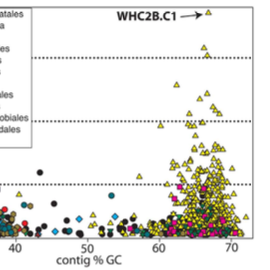Link to online paper: http://journal.frontiersin.org/article/10.3389/fmicb.2011.00268/abstract
Abstract
Ultramafic rocks in the Earth’s mantle represent a tremendous reservoir of carbon and reducing power. Upon tectonic uplift and exposure to fluid flow, serpentinization of these materials generates copious energy, sustains abiogenic synthesis of organic molecules, and releases hydrogen gas (H2). In order to assess the potential for microbial H2 utilization fueled by serpentinization, we conducted metagenomic surveys of a marine serpentinite-hosted hydrothermal chimney (at the Lost City hydrothermal field) and two continental serpentinite-hosted alkaline seeps (at theTablelands Ophiolite, Newfoundland). Novel [NiFe]-hydrogenase sequences were identified at both the marine and continental sites, and in both cases, phylogenetic analyses indicated aerobic, potentially autotrophic Betaproteobacteria belonging to order Burkholderiales as the most likely H2-oxidizers. Both sites also yielded metagenomic evidence for microbial H2 production catalyzed by [FeFe]-hydrogenases in anaerobic Gram-positive bacteria belonging to order Clostridiales. In addition, we present metagenomic evidence at both sites for aerobic carbon monoxide utilization and anaerobic carbon fixation via the Wood–Ljungdahl pathway. In general, our results point to H2-oxidizing Betaproteobacteria thriving in shallow, oxic–anoxic transition zones and the anaerobic Clostridia thriving in anoxic, deep subsurface habitats. These data demonstrate the feasibility of metagenomic investigations into novel subsurface habitats via surface-exposed seeps and indicate the potential for H2-powered primary production in serpentinite-hosted subsurface habitats.
